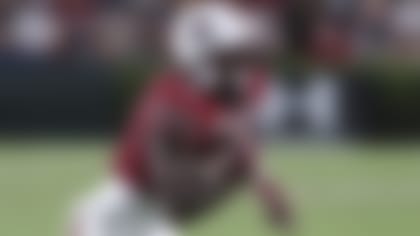*Now that there are 50 Super Bowls in the books, Dave Dameshek -- with the help of Elliot Harrison and Gil Brandt -- is taking a look at how our perception of superior quarterback play has evolved in the Super Bowl era, using every 10th Super Bowl as a check-in point. Over the next week, we'll be presenting the top 10 quarterbacks as of Super Bowl X, Super Bowl XX, Super Bowl XXX, Super Bowl XL and Super Bowl 50 before wrapping things up with a speculative look at the list after the clock runs out in Super Bowl LX. *
As promised in the first installment of this series, the deeds of those whose stars shined brightest in the pre-Super Bowl era will fade as we press forward with our rankings. Curmudgeons might claim ageism, but the reality is undeniable: In part because of rules changes that liberated the passing game in the late 1970s (which, in turn, informed strategic modifications by savvy game changers like Bill Walsh and Don Coryell), quarterbacks were, plain and simple, asked to carry more of the load in the second and third decades of the Super Bowl era, fully replacing running backs as the leading men in pro football.
Before we dig into my rankings through Super Bowl XX (that is, as of January 1986), let's take a look at how two of my NFL Media colleagues -- Elliot Harrison, who has a special affinity for NFL history, and Gil Brandt, who didn't just see these guys play, but actually scouted most of them -- ranked their quarterbacks, along with how the numbers say they stack up (according to passer rating from 1966 through the 1985 season):
Top 10 Quarterbacks Between Super Bowls I and XX (Jan. 1986):
Elliot Harrison's list:
1) Johnny Unitas
2) Roger Staubach
3) Bart Starr
4) Terry Bradshaw
5) Dan Fouts
6) Len Dawson
7) Fran Tarkenton
8) Sonny Jurgensen
9) Joe Namath
10) Joe Montana
Gil Brandt's list:
1) Joe Montana
2) Roger Staubach
3) Terry Bradshaw
4) Bart Starr
5) Dan Fouts
6) Len Dawson
7) Joe Namath
8) Dan Marino
9) Johnny Unitas
10) Jim Plunkett
By the numbers (according to passer rating):
1) Dan Marino (96.4)
2) Joe Montana (92.4)
3) Sonny Jurgensen (85.7)
4) Roger Staubach (83.4)
5) Bart Starr (82.8)
6) Dave Krieg (82.3)
7) Neil Lomax (82.3)
8) Danny White (82.3)
9) Ken Anderson (82)
10) Dan Fouts (81.8)
Now, without further ado, my top 10 quarterbacks through Super Bowl XX:
1) Terry Bradshaw
Alright, let's just clear the air right now: I'm a Steelers fan. I'm sure I'll be accused of being a homer for this one ... but, like an SEC ref working an SEC vs. Big 12 game, I sincerely want to go against my rooting interest in order to avoid those charges. Listen, Bradshaw's not the greatest of all time, but remember the standard we're evaluating here: Namely, the Super Bowl era up to January 1986. Some will say Unitas belongs here ... but again, we're putting more weight on 1966 and beyond. Others will push for Staubach ... but in what should be a close debate between the 1970s NFL version of Bird vs. Magic or Brady vs. Peyton? I'll side with the guy who swept their head-to-head series. No, I don't think Eli Manning is better than Brady (who is 2-3 all-time against Eli), but that's not an apt comparison. Bradshaw transitioned from being a big-armed hayseed who handed off to Franco Harris and let the defense do the rest into a big-armed hayseed who won the '78 NFL MVP award and back-to-back Super Bowl MVP nods ... and who called his own plays. The window of his prime was certainly tighter than many ranked here (not Staubach's, though), but most importantly -- as of January 1986 -- he had twice as many rings as any other quarterback. Ever.
2) Roger Staubach
Sure, the fact that the Cowboys finished above .500 in every season Staubach was with the team has tons to do with the organization Gil Brandt and Tom Landry built, but let's not pretend this electric field general was just the beneficiary of a good situation. Staubach was ahead of his time, both as a functional scrambler/elusive runner (he posted three seasons with at least 316 rushing yards) and in terms of accuracy (whereas most of his peers hovered around the 50 percent completion mark, he flirted annually with 60 percent while keeping his INTs relatively low). His hallmark, though, was a flair for pulling off dramatic wins that surely still haunts the dreams of Minnesota and D.C. fans.
3) Joe Montana
Like we mentioned earlier, a lot can change ... and by January '86, San Francisco 49ers coach Bill Walsh and his triggerman (not to mention some serious rule changes that opened up the passing game) had done nothing less than revolutionize the sport. Montana elevated expectations for all QBs in this copycat league, which suddenly saw less running, more passing attempts and higher completion rates. Oh, and Joe had two Lombardis by this point, even though he hadn't yet peaked, and receiver Jerry Rice had just finished his rookie year.
4) Johnny Unitas
Here's where things start getting tricky: If we were trying to evenly evaluate Johnny U's full career (which started 10 years before the Super Bowl era), we'd keep him at (or near) the No. 1 spot on this list. However, as mentioned from the jump, we're putting significantly more weight on 1966 and beyond, so Unitas and his contemporaries will suffer on this and subsequent lists.
5) Dan Marino
While the sample size is small -- he'd played only three seasons with the Miami Dolphins by January '86 -- Marino had already won an MVP award and proven himself to be a revelation capable of blowing away a number of passing records. It says here that his sophomore '84 season should still be regarded as the greatest in NFL history (48 TDs and 5,084 passing yards ... long before additional rules and philosophical changes allowed more mundane humans like Matthew Stafford to achieve such numbers).
6) Dan Fouts
Don Coryell's dynamic Bolts never even got to a Super Bowl, let alone won one, but Fouts led what was unquestionably pro football's best offense as the '70s gave way to the '80s. The former Duck probably couldn't beat me in a foot race, but his right arm led the league in passing yards four straight years (with 4,082 in '79, 4,715 in '80 and 4,802 in '81) and in TDs for two straight years. But while he's still held in high esteem, one wonders how he'd be regarded if his San Diego Chargers had just taken care of business against the undermanned Houston Oilers instead of losing a '79 Divisional Round stunner.
7) Bart Starr
Listen, I respect my elders. I understand Starr rightly stands as one of pro football's legends. He was more of a steady game manager than courageous gunslinger, because that's what Vince Lombardi's Packers needed him to be. But in an evaluation of the Super Bowl era's best QBs, it's difficult to say the Hall of Famer deserves to be higher on this list at this point, when his high-water mark for touchdown passes was 16. His 1961 and '62 seasons were his best in terms of passing yards, with 2,418 and 2,438 respectively -- but even when you use his averages in those 14-game campaigns to approximate his output in a 16-game schedule, it's less than 2,800 yards.
8) Fran Tarkenton
As mentioned in the first installment, it's just plum stunning to see Tarkenton's name still listed in the top 10 in all-time passing yards ... and if he'd won even one of those three trips he took with the Vikings to the Super Bowl, he'd be listed higher here. But he didn't, so he isn't.
9) Joe Theismann
In part because it took so long to get rolling, and in part because it ended prematurely on that leg injury you've probably seen 698 times, Theismann's career seems to have slipped through the cracks of history. He graduated from Notre Dame in 1970, but he didn't really hit his stride as a starting QB (at least in the NFL -- he toiled in the CFL in the early part of the decade and didn't fully take over for the Washington Redskins 'til '78) until he played under Joe Gibbs on some excellent D.C. teams (the '83 offense he helmed still ranks among the best in history). Theismann appeared in two straight Super Bowls, winning one, and nabbed an NFL MVP award for good measure.
10) Joe Namath
Yeah, yeah, he had more interceptions than TDs. So I'm a sucker ... but to paraphrase Jules in "Pulp Fiction," we're talkin' about one charming Joe. And besides, who else belongs here more? (Bob Griese, perhaps?) Maybe it comes down to something similar to the argument over Terrell Davis' Hall of Fame candidacy. Some might argue that Namath and Davis didn't have the virtue of longevity, but in my book, I'll take the shorter stretch of transcendence.
Follow Dave Dameshek on Twitter @Dameshek.













